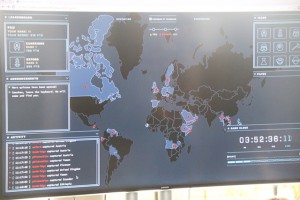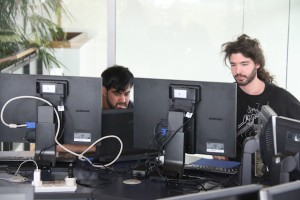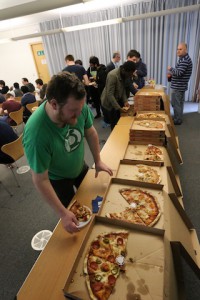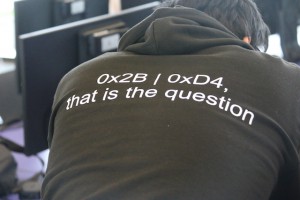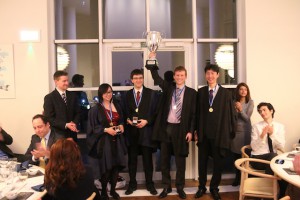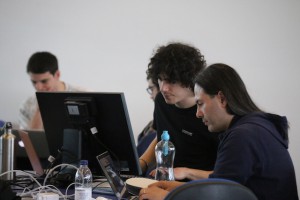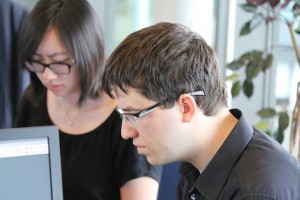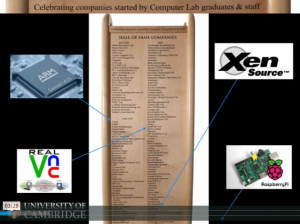I’m at Financial Cryptography 2020 and will try to liveblog some of the talks in followups to this post.
The keynote was given by Allison Nixon, Chief Research Officer of Unit221B, on “Fraudsters Taught Us that Identity is Broken”.
Allison started by showing the Mitchell and Webb clip. In a world where even Jack Dorsey got his twitter hacked via incoming SMS, what is identity? Your thief becomes you. Abuse of old-fashioned passports was rare as they were protected by law; now they’re your email address (which you got by lying to an ad-driven website) and phone number (which gets taken away and given to a random person if you don’t pay your bill). If lucky you might have a signing key (generated on a general purpose computer, and hard to revoke – that’s what bitcoin theft is often about). The whole underlying system is wrong. Email domains, like phone numbers, lapse if you forget to pay your bill; fraudsters actively look for custom domains and check if yours has lapsed, while relying parties mostly don’t. Privacy regulations in most countries prevent you from looking up names from phone numbers; many have phone numbers owned by their employers. Your email address can be frozen or removed because of spam if you’re bad or are hacked, while even felons are not deprived of their names. Evolution is not an intelligent process! People audit password length but rarely the password reset policy: many use zero-factor auth, meaning information that’s sort-of public like your SSN. In Twitter you reset your password then message customer support asking them to remove two-factor, and they do, so long as you can log on! This is a business necessity as too many people lose their phone or second factor, so this customer-support backdoor will never be properly closed. Many bitcoin exchanges have no probation period, whether mandatory or customer option. SIM swap means account theft so long as phone number enables password reset – she also calls this zero-factor authentication.
SIM swap is targeted, unlike most password-stuffing attacks, and compromises people who comply with all the security rules. Allison tried hard to protect herself against this fraud but mostly couldn’t as the phone carrier is the target. This can involve data breaches at the carrier, insider involvement and the customer service back door. Email domain abuse is similar; domain registrars are hacked or taken over. Again, the assumptions made about the underlying infrastructure are wrong. Your email can be reset by your phone number and vice versa. Your private key can be stolen via your cloud backups. Both identity vendors and verifiers rely on unvetted third parties; vendors can’t notify verifiers of a hack. The system failure is highlighted by the existence of criminal markets in identity.
There are unrealistic expectations too. As a user of a general-purpose computer, you have no way to determine whether your machine is suitable for storing private keys, and almost 100% of people are unable to comply with security advice. That tells you it’s the system that’s broken. It’s a blame game, and security advice is as much cargo cult as anything else.
What would a better identity system look like? There would be an end to ever-changing advice; you’d be notified if your information got stolen, just as you know if your physical driving license is stolen; there would be an end to unreasonable expectations of both humans and computers; the legal owner of the identity would be the person identified and would be non-transferable and irrevocable; it would not depend on the integrity of 3rd-party systems like DNS and CAs and patch management mechanisms; we’ll know we’re there once the criminal marketplace vanishes.
Questions: What might we do about certificate revocation? A probation period is the next thing to do, as how people learn of a SIM swap is a flood of password reset messages in email, and then it’s a race. I asked whether rather than fixing the whole world, we should fix it one relying party at a time? Banks give you physical tokens after all, as they’re regulated and have to eat the losses. Allison agreed; in 2019 she talked about SIM swap to many banks but had no interest from any crypto exchange. Curiously, the lawsuits tend to target carriers rather than the exchanges. What about SS7? There are sophisticated Russian criminal gangs doing such attacks, but they require a privileged position in the network, like BGP attacks. What about single signon? The market is currently in flux and might eventually settle on a few vendors. What about SMS spoofing attacks? Allison hasn’t seen them in 4g marketplaces or in widespread criminal use. Caller-ID spoofing is definitely used, by bad guys who organise SWATting. Should we enforce authentication tokens? The customer service department will be inundated with people who have lost theirs and that will become the backdoor. Would blockchains help? No, they’re just an audit log, and the failures are upstream. The social aspect is crucial: people know how to protect their physical cash in their wallet, and a proper solution to the identity problem must work like that. It’s not an impossible task, and might involve a chip in your driver’s license. It’s mostly about getting the execution right.

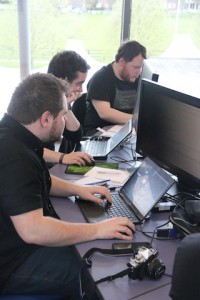 The competition was played out on a “Risk-style” world map, and competing teams had to fight each other for control of several countries, each protected by a fiendish puzzle. A number of universities had also submitted guest challenges, and it was great that so many teams got involved in this creative process too. To give one example; The Cambridge team had designed a challenge based around a historically accurate enigma machine, with this challenge protecting the country of Panama. Competitors had to brute-force the settings of the enigma machine to decode a secret message. Other challenges were based around the core CTF subject areas of web application security, binary reverse engineering and exploitation, forensics, and crypto. Some novice teams may have struggled to compete, but they would have learned a lot, and hopefully developed an appetite for more competition. There were also plenty of teams present with advanced tool sets and a solid plan, with these preparations clearly paying off in the final scores.
The competition was played out on a “Risk-style” world map, and competing teams had to fight each other for control of several countries, each protected by a fiendish puzzle. A number of universities had also submitted guest challenges, and it was great that so many teams got involved in this creative process too. To give one example; The Cambridge team had designed a challenge based around a historically accurate enigma machine, with this challenge protecting the country of Panama. Competitors had to brute-force the settings of the enigma machine to decode a secret message. Other challenges were based around the core CTF subject areas of web application security, binary reverse engineering and exploitation, forensics, and crypto. Some novice teams may have struggled to compete, but they would have learned a lot, and hopefully developed an appetite for more competition. There were also plenty of teams present with advanced tool sets and a solid plan, with these preparations clearly paying off in the final scores.